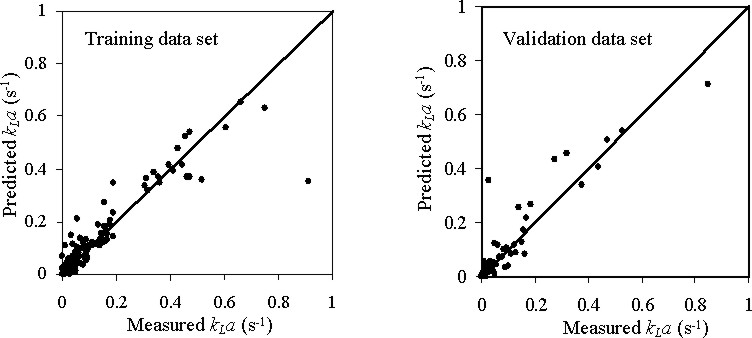
engineering & technology publications
ISSN 1759-3433
PROCEEDINGS OF THE EIGHTH INTERNATIONAL CONFERENCE ON THE APPLICATION OF ARTIFICIAL INTELLIGENCE TO CIVIL, STRUCTURAL AND ENVIRONMENTAL ENGINEERING
Mass Transfer Analysis in Ozone Bubble Columns using Artificial Neural Networks
Department of Civil and Environmental Engineering, University of Alberta, Edmonton, Alberta, Canada
This study aims at developing a simple and affordable technique that can provide reliable results for designing ozone bubble column contactors by utilising a modelling approach that is based on simple inputs such as the contactor's geometry and operating conditions to predict the overall mass transfer coefficient (kLa) and consequently the dissolved ozone concentrations. Artificial neural network (ANN) modelling techniques were selected for this study due to their high performance as regression tools, high nonlinearity and the ability to capture complex interactions among the input variables in a system without any prior knowledge about the nature of these interactions. A multi-layer perceptron (MLP) ANN trained with the error back-propagation (BP) algorithm was used in this analysis. A database representing most of the current application of ozone bubble columns was assembled for this work (300 data points). The data was divided into training data sets, used for model calibration, and as a testing data set, used for model validation.
The MLP ANN trained with error BP algorithm was then applied to simulate and predict the kLa in different ozone bubble columns under different operating conditions and flow modes. The ANN model developed managed to predict kLa values in the training and testing data sets, as shown in Figure 50.1, with a coefficient of multiple determinations (R2) values that exceeded 0.87 and 0.84, respectively. The relatively high R2 values associated with both data sets imply good model accuracy and illustrated the ability of the ANN model in predicting the kLa at different operating conditions and flow modes.
The variations observed between the validated and the measured kLa values shown in Figure 50.1 are mainly related to the relatively small size of the training and validation data sets. In order to improve the performance of the developed ANN model, more data should be obtained at high ranges of Hbc, uL and uG.
purchase the full-text of this paper (price £20)
go to the previous paper
go to the next paper
return to the table of contents
return to the book description
purchase this book (price £80 +P&P)
